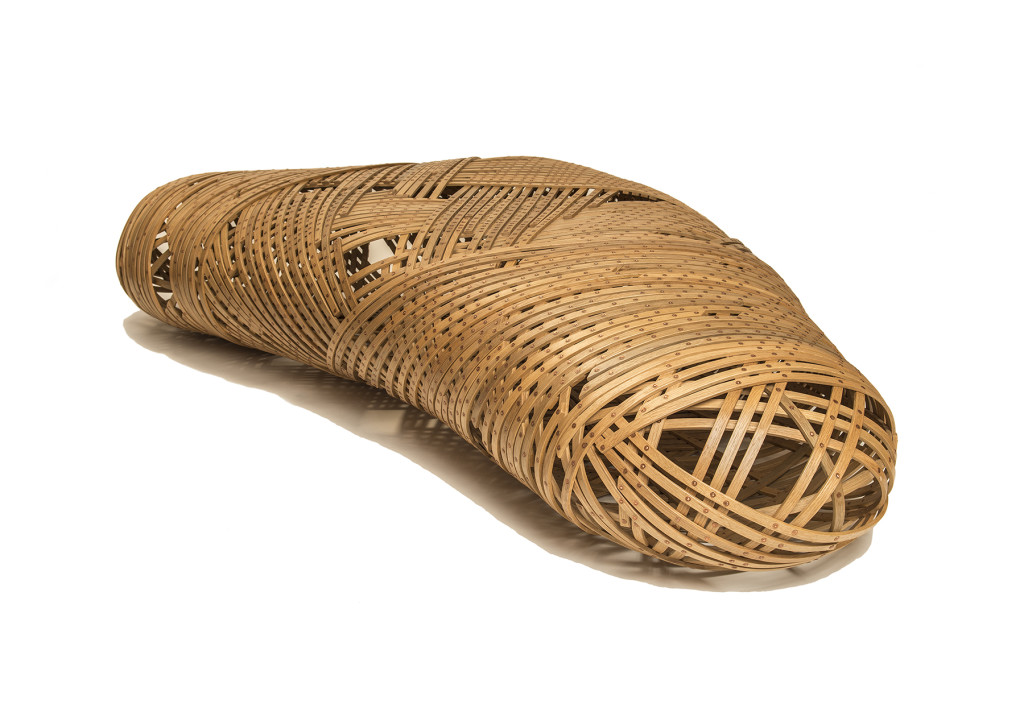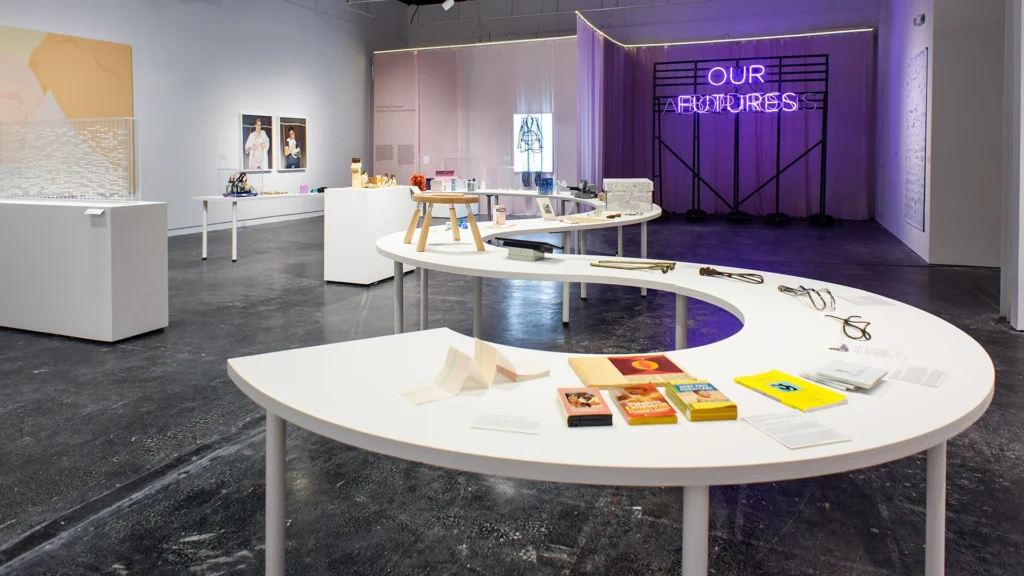RELATED EVENTS
Opening Reception
Friday, July 10, 5:30 – 8:00 PM
Houston Center for Contemporary Craft
4848 Main St. Houston, TX 77002
The evening will feature ceramic artist Del Harrow and open studios by HCCC’s current resident artists.Free Workshop and Lecture by Ceramic Artist Del Harrow
“Clay and Digital Fabrication: Labor, Authorship, Aesthetics, and the Post-Human”
- Harrow Workshop
Friday July 10, 10:00 AM – 4:00 PM
Ceramics Studio at the Glassell School of Art
5101 Montrose Blvd, Houston, TX 77006
To register, contact Jeff Forster at jeff@jeffforster.com by July 8, 2015- Harrow Lecture
Saturday July 11, 2:00 PM
Freed Auditorium at the Glassell School of Art
5101 Montrose Blvd, Houston, TX 77006
Lecture by Betsy Greer, Author of
Craftivism: The Art of Craft and Activism
Saturday, August 29, 2:00 PM at HCCC
Houston Center for Contemporary Craft (HCCC) is pleased to host Crafting a Continuum: Rethinking Contemporary Craft, an exhibition organized by the Arizona State University (ASU) Art Museum and Ceramics Research Center in the Herberger Institute for Design and the Arts. Highlighting the Museum’s extensive holdings in craft objects made from wood, ceramic and fiber, the exhibition provides a national and international perspective on modern and contemporary craft and the current level of innovation and experimentation in material studies.
HCCC Curator, Elizabeth Kozlowski, was an assistant curator of the exhibition when she worked as the Windgate Curatorial Fellow at ASU Art Museum in 2013. Kozlowski says that Crafting a Continuum presents the work of pioneering artists of the studio-craft movement—a group that was pivotal in building and maintaining craft programs in higher education institutions around the country—and those generations of artists that have followed. Both of these groups are the driving force behind the model of “rethinking craft.” “The newer artists have built upon the knowledge of their predecessors but have a different approach to craft and care little about how their work is classified. They are pushing boundaries of materials and experimenting with technology, yet remain utterly convinced by the power of the handmade object.”
Pioneering artists in the exhibition include Dorothy Gill Barnes, Ed Moulthrop, and Peter Voulkos. Coiled Banyan (1988) is a representation of Dorothy Gill Barnes’ signature style and approach to basketry and sculptural forms. This wide-mouthed basket, woven with bark and branches from a banyan tree, is formal in approach, and, yet, its materials are pushed to the limit through an expanded scale. While her forms may vary, Barnes’ relationship to nature remains steadfast. With a career that spans six decades, the artist marries art and nature by harvesting materials from her local environment and using forms inspired by nature that retain a sense of place. Peter Voulkos’ Ceramic Pot (Steel Pot) (1968) is a work that hints at what is to come many years later in the field of contemporary ceramic art. With slashes in the clay body dancing across the surface, the stacked form is on the verge of being torn apart and ripped away from any recognizable attributes of functionality. Voulkos was adept at translating the ideals of abstract expressionism into the language of ceramics, and his work continues to influence myriad ceramic artists today.
Contemporary artists represented in the exhibition include Sonya Clark, Mark Newport, Matthias Pliessnig, Anders Ruhwald, and Alison Elizabeth Taylor. Inspired by many of the earlier artists mentioned, this group routinely pushes the boundaries of their work through materials or content by commenting on social issues, integrating technology into their processes and experimenting with trans-disciplinary work. Artist and educator Sonya Clark explores race, culture, class and identity in Thread Wrapped in Blue and Brown, a work from her Comb series, made in 2008. Black plastic combs and metallic thread form the shadow of African cloth, or the remnants of the American flag, in order to comment on the complexities of being black in the 21st century. Matthias Pliessnig implements computer technology, craftsmanship and design into his sculptural furniture. He uses traditional steam-bent wood to transform his digital models into physical reality. His piece Brace (2012) is constructed using white oak and hand-formed copper rivets, which cover the surface of his curvaceous and inviting take on formal seating.
Works by international artists add another dimension to the show by demonstrating current trends, including a playful irreverence used by many European artists. Danish female collaborative Claydies (Karin Kjældgård-Larsen and Tine Broksø) apply both a sense of humor and an element of seriousness to their practice. In True Feelings (2011), the artists blindfolded themselves to create a hand-built ceramic tea set, a formal dining element loaded with historical references to class and status. Swedish ceramic artist Karin Karinson Nilsson, a student of “sloppy craft,” utilizes numerous firings in an effort to capture a sense of motion and chaos. Her ceramic glazes and glass components flow across the surface of This Was Not a Sneak Attack (2012), a colorful piece that combines various kitschy ceramic objects.
Crafting a Continuum was curated by ASU’s Associate Director and Senior Curator Heather Sealy Lineberry and its former Curator of Ceramics, Peter Held, with assistance from former Windgate Curatorial Fellow Elizabeth Kozlowski (now Curator at Houston Center for Contemporary Craft). The exhibition was made possible with generous support from the Windgate Charitable Foundation.
The full-color catalog that accompanies the show is approximately 192 pages, with a series of essays and brief perspectives dedicated to the existence of craft within a critical context, a comprehensive bibliography, artists’ biographies, and an index. The catalog will be sold in HCCC’s Asher Gallery.
Above: (1) Dorothy Gill Barnes, “Coiled Banyan,”1988. Wood. 7x25in. Diane and Sandy Besser Collection. (2) Margarita Cabrera, “Space In Between (Nopal # 3),” 2012. Fabric (border patrol uniform), thread, copper, terra cotta pot. 41 x 59 x 34 in. (3) Andy Casto, “Assemblage 44,” 2012. Glazed ceramic, gold luster, paint, wood, metal. 71 ¾ x 66 x 31 in. (4) Sonya Clark, “Thread Wrapped in Blue and Brown,” 2008. Combs, thread. 45 x 1 x 60 in. (5) Claydies: Karen Kjældgård-Larsen and Tine Broksø, “True Feelings,” 2011. Glazed porcelain. Dimensions variable. (6) Carol Eckert, “And a Wolf Shall Devour the Sun,” 2012. Black waxed linen thread, wire. 14 x 65 x 3 in. (7) Future Retrieval:Guy Michael Davis and Katie Parker, “Hye-Que Monkey in Captivity,” 2011. Glazed porcelain, screenprint, wood. 54 x 24 x 7 in. (8) Mia Görranson, “Squares of Nature,” 2012. Glazed porcelain. 36 x 36 x 3 in. (9) Katie Hudnall, “Bolt Reliquary,” 2011. Recycled wood, mixed media. 62 x 40 x 15 in. (10) Steen Ipsen, “Tied Up #62,” 2010. Glazed stoneware, cord. 12 x 17 ½ x 10 ½ in. (11) Mark Newport, “W Man,” 2009. Hand-knit acrylic, buttons. 80 x 23 x 6 in. (12) Karin Karinson Nilsson, “This Was Not a Sneak Attack,” 2012. Glazed porcelain, glass, mixed media. 13 x 13 ½ x 10 ½ in. (13) GustafNordenskiöld, “Mure,” 2011. Colored porcelain, climbing rope. 12 x 17 ½ x 10 ½ in. (14) Matthias Pliessnig, “Brace,” 2012. White oak, copper. 17 x 88 x 39 in. (15) Marc Ricourt, “Lime Wood Sculpture,” 2011. Lime wood, oxide. 7 ¼ x 13 ½ x 12 in. (16) Anders Ruhwald, “Form and Function,” #2, 2006. Glazed earthenware, painted steel, piping, rubber caps. 30 x 40 x 28 in. (17) Paul Scott, “Scott’s Cumbrian Blue(s)- A Willow for Ai Weiwei, Wen Tao, Liu Zhenggang, ZhangJinsong, HuMingfen,” 2011. Glazed ceramic (c. 1840), decals. 8 11/16 x 10 ⅝ x 1 3/16 in. (18) Linda Sormin, “Wanli,” 2010. Glazed white and red earthenware, found objects, (metal ship, porcelain shards from dish by SanamEmami). 20 x 22 x 23 in. (19) Per B. Sundberg, “The Gathering,” 2011. Glazed porcelain, found objects. 11 x 9 x 9 in. (20) Alison Elizabeth Taylor, “Chainlink,” 2008. Wood, veneer, shellac. 34 x 46 x 1 in. (21) Yoshimasa Tsuchiya, “Carnival,” 2005. Hinoki (Japanese cypress), paint, crystals. 6 x 11 x 8 in. (22) Peter Voulkos, “Ceramic Pot (Steel Pot),” 1968. Stoneware (thrown & shaped). 32 1/2 x 11 1/2 in. Purchased with funds provided by the American Art Heritage Fund.

